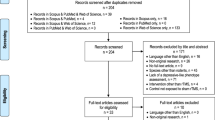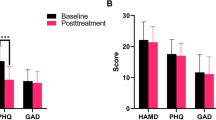Abstract
The neuroendocrine and behavioral effects of repetitive transcranial magnetic stimulation (rTMS) were investigated in two rat lines selectively bred for high and low anxiety-related behavior. The stimulation parameters were adjusted according to the results of accurate computer-assisted and magnetic resonance imaging-based reconstructions of the current density distributions induced by rTMS in the rat and human brain, ensuring comparable stimulation patterns in both cases. Adult male rats were treated in two 3-day series under halothane anesthesia. In the forced swim test, rTMS-treatment induced a more active coping strategy in the high anxiety-related behavior rats only (time spent struggling; 332% vs. controls), allowing these animals to reach the performance of low anxiety-related behavior rats. In contrast, rTMS-treated low anxiety-related behavior rats did not change their swimming behavior. The development of active coping strategies in high anxiety-related behavior rats was accompanied by a significantly attenuated stress-induced elevation of plasma corticotropin and corticosterone concentrations. In summary, the behavioral and neuroendocrine effects of rTMS of frontal brain regions in high anxiety-related behavior rats are comparable to the effects of antidepressant drug treatment. Interestingly, in the psychopathological animal model repetitive transcranial magnetic stimulation induced changes in stress coping abilities in the high-anxiety line only.
Similar content being viewed by others
Log in or create a free account to read this content
Gain free access to this article, as well as selected content from this journal and more on nature.com
or
References
Armario A, Galvada A, Marti O . (1988): Forced swimming test in rats: Effect of desipramine administration and the period of exposure to the test on struggling behaviour, swimming, immobility and defecation rate. Eur J Pharmacol 158: 207–212
Báez M, Volosin M . (1994): Corticosterone influences forced swim-induced immobility. Pharmacol Biochem Behav 49: 729–736
Borsini F, Meli A . (1988): Is the forced swimming test a suitable model for revealing antidepressant activity? Psychopharmacology 94: 147–160
Cerri G, De Leo R, Moglie F, Schiavoni A . (1995): An Accurate 3-D model for magnetic stimulation of the brain cortex. J Med Eng Tech 19: 7–16
Crawley JN, Corwin RL . (1994): Biological actions of cholecystokinin. Peptides 5: 731–755
De Bellis MD, Gold PW, Geracioti TD Jr, Listwak SJ, Kling MA . (1993): Association of fluoxetine treatment with reductions in CSF concentrations of corticotropin-releasing hormone and arginine vasopressin in patients with major depression. Am J Psychiatry 150: 656–667
Diorio D, Viau V, Meaney MJ . (1993): The role of the medial prefrontal cortex (cingulate gyrus) in the regulation of hypothalamic-pituitary-adrenal response to stress. J Neurosci 13: 3839–3847
Fleischmann A, Prolov K, Abarbanel J, Belmaker RH . (1995): The effect of transcranial magnetic stimulation of rat brain on behavioral models of depression. Brain Res 699: 130–132
Gentsch C, Lichtsteiner M, Feer H . (1988): Genetic and environmental influences on behavioral and neurochemical aspects of emotionality in rats. Experientia 44: 482–490
George MS, Lisanby S, Sackeim HA . (1999): Transcranial magnetic stimulation. Arch Gen Psychiatry 56: 300–311
Geyer MA, Markou A . (1995): Animal models of psychiatric disorders. In Bloom FE, KupferDJ (eds), Psychopharmacology: The Fourth Generation of Progress, New York, Raven Press, pp 787–798
Greene EC . (1963): Anatomy of the Rat. New York, Hafner.
Heuser IJ, Schweiger U, Gotthardt U, Schmider J, Lammers CH, Dettling M, Holsboer F . (1996): Pituitary-adrenal system regulation and psychopathology during amitryptiline treatment in elderly depressed patients and in normal controls. Am J Psychiatry 153: 93–99
Holsboer F . (2000): The corticosteroid receptor hypothesis of depression. Neuropsychopharmacology 23: 477–507
Holsboer F . (1995): Neuroendocrinology of mood disorders. In Bloom FE, Kupfer DJ (eds), Psychopharmacology: The Fourth Generation of Progress, New York, Raven Press, pp 957–968
Holsboer F, Barden N . (1996): Antidepressants and hypothalamic-pituitary-adrenocortical regulation. Endocr Rev 17: 187–205
Hurley KM, Herbert H, Moga MM, Saper CB . (1991): Efferent projections of the infralimbic cortex of the rat. J Comp Neurol 308: 249–276
Ji RR, Schlaepfer TE, Aizenman CD, Epstein CM, Qiu D, Huang JC, Rupp F . (1998): Repetitive transcranial magnetic stimulation activates specific regions in rat brain. Proc Natl Acad Sci USA 95: 15635–15640
Keck ME, Sillaber I, Ebner K, Welt T, Toschi N, Kaehler ST, Singewald N, Philippu A, Elbel GK, Wotjak CT, Holsboer F, Landgraf R, Engelmann M . (2000): Acute transcranial magnetic stimulation of frontal brain regions selectively modulates the release of vasopressin, biogenic amines and amino acids in the rat brain. Eur J Neurosci 12: 3713–3720
Korte SM, De Kloet ER, Buwalda B, Bouman SD, Bohus B . (1996): Antisense to the glucocorticoid receptor in hippocampal dentate gyrus reduces immobility in forced swim test. Eur J Pharmacol 301: 19–25
Landgraf R, Wigger A, Holsboer F, Neumann ID . (1999): Hyperreactive hypothalamo-pituitary-adrenocortical (HPA) axis in rats bred for high anxiety-related behavior. J Neuroendocrinol 11: 405–407
Liebsch G, Linthorst ACE, Neumann ID, Reul JMHM, Holsboer F, Landgraf R . (1998a): Behavioral, physiological, and neuroendocrine stress responses and differential sensitivity to diazepam in two Wistar rat lines selectively bred for high and low anxiety-related behavior. Neuropsychopharmacology 19: 381–396
Liebsch G, Montkowski A, Holsboer F, Landgraf R . (1998b): Behavioural profiles of two Wistar rat lines selectively bred for high or low anxiety-related behavior. Behav Brain Res 94: 301–310
Lucki I . (1997): The forced swimming test as a model for core and component behavioral effects of antidepressant drugs. Behav Pharmacol 8: 523–532
Marti J, Armario A . (1993): Effects of diazepam and desipramine in the forced swimming test: influence of previous experience with situation. Eur J Pharmacol 236: 295–299
Müller MB, Toschi N, Kresse AE, Post A, Keck ME . (2000): Long-term repetitive transcranial magnetic stimulation increases the expression of brain-derived neurotrophic factor and cholecystokinin mRNA, but not neuropeptide tyrosine mRNA in specific areas of rat brain. Neuropsychopharmacology, 23: 205–215
Pascual-Leone A, Rubio B, Pallardo F, Catala MD . (1996): Rapid-rate transcranial magnetic stimulation of left dorsolateral prefrontal cortex in drug-resistant depression. Lancet 348: 233–237
Pellow S, Chopin P, File SE, Briley M . (1985): Validation of open:closed arm entries in an elevated plus-maze as a measure of anxiety in the rat. J Neurosci Methods 14: 149–167
Porsolt RD, LePichon M, Jalfre M . (1977): Depression: a new animal model sensitive to antidepressant treatments. Nature 266: 730–732
Post A, Müller MB, Engelmann M, Keck ME . (1999): Repetitive transcranial magnetic stimulation in rats: evidence for a neuroprotective effect in vitro and in vivo. Eur J Neuroscience 11: 3247–3254
Pridmore S . (1999): Rapid transcranial magnetic stimulation (rTMS) and normalisation of the dexamethasone suppression test (DST). Psychiatry Clin Neurosci 53: 33–37
Ravazzani P, Ruohonen J, Grandori F, Tognola G . (1996): Magnetic Stimulation of the nervous system. Induced electric field in unbounded, semi-infinite, spherical and cylindrical media. Annals Biomed Eng 24: 606–616
Reul JMHM, Stec I, Söder M, Holsboer F . (1993): Chronic treatment of rats with the antidepressant amitriptyline attenuates the activity of the hypothalamic-pituitary-adrenocortical system. Endocrinology 133: 312–320
Reul JMHM, Labeur MS, Grigoriadis DE, DeSouza EB, Holsboer F . (1994): Hypothalamic-pituitary-adrenocortical axis changes in the rat after long-term treatment with the reversible monoamine oxidase-A inhibitor moclobemide. Neuroendocrinology 60: 509–519
Soares JC, Mann JJ . (1997): The functional neuroanatomy of mood disorders. J Psychiat Res 31: 393–432
Takagishi M, Chiba T . (1991): Efferent projections of the infralimbic (area 25) region of the medial prefrontal cortex in the rat: an anterograde tracer PHA-L study. Brain Res 566: 26–39
Willner P, Muscat R, Papp M . (1992): Chronic mild stress-induced anhedonia: a realistic animal model of depression. Neurosci Biobehav Rev 16: 525–534
Zyss T, Gorka Z, Kowalska M, Vetulani J . (1997): Preliminary comparison of behavioral and biochemical effects of chronic transcranial magnetic stimulation and electroconvulsive shock in the rat. Biol Psychiatry 42: 920–924
Acknowledgements
The authors would like to thank Dr. A. Curt (University Hospital Zurich, Swiss Paraplegic Centre, Zurich, Switzerland) for fruitful discussion of the experimental protocol, G. Kohl for expert handling of the RIAs, and P. Lörscher for skillful technical assistance. The magnetic stimulation device was kindly provided by DANTEC, Skovlunde, Denmark. This project is supported by the German Federal Research Ministry within the promotional emphasis “Competence Nets in Medicine” (Kompetenznetz Depression & Suizidalität; subproject 4.5; MEK).
Author information
Authors and Affiliations
Rights and permissions
About this article
Cite this article
Keck, M., Welt, T., Post, A. et al. Neuroendocrine and Behavioral Effects of Repetitive Transcranial Magnetic Stimulation in a Psychopathological Animal Model Are Suggestive of Antidepressant-like Effects. Neuropsychopharmacol 24, 337–349 (2001). https://doi.org/10.1016/S0893-133X(00)00191-3
Received:
Revised:
Accepted:
Issue date:
DOI: https://doi.org/10.1016/S0893-133X(00)00191-3
Keywords
This article is cited by
-
Recovering from depression with repetitive transcranial magnetic stimulation (rTMS): a systematic review and meta-analysis of preclinical studies
Translational Psychiatry (2020)
-
Inhibition of monoamine oxidase activity by repetitive transcranial magnetic stimulation: implications for inter-train interval and frequency
European Archives of Psychiatry and Clinical Neuroscience (2020)
-
Mechanisms and therapeutic applications of electromagnetic therapy in Parkinson’s disease
Behavioral and Brain Functions (2015)
-
Treatment-resistant depression: are animal models of depression fit for purpose?
Psychopharmacology (2015)
-
Traitement des pathologies psychiatriques et stimulation magnétique transcrânienne répétée (rTMS): où en est-on ?
PSN (2011)



